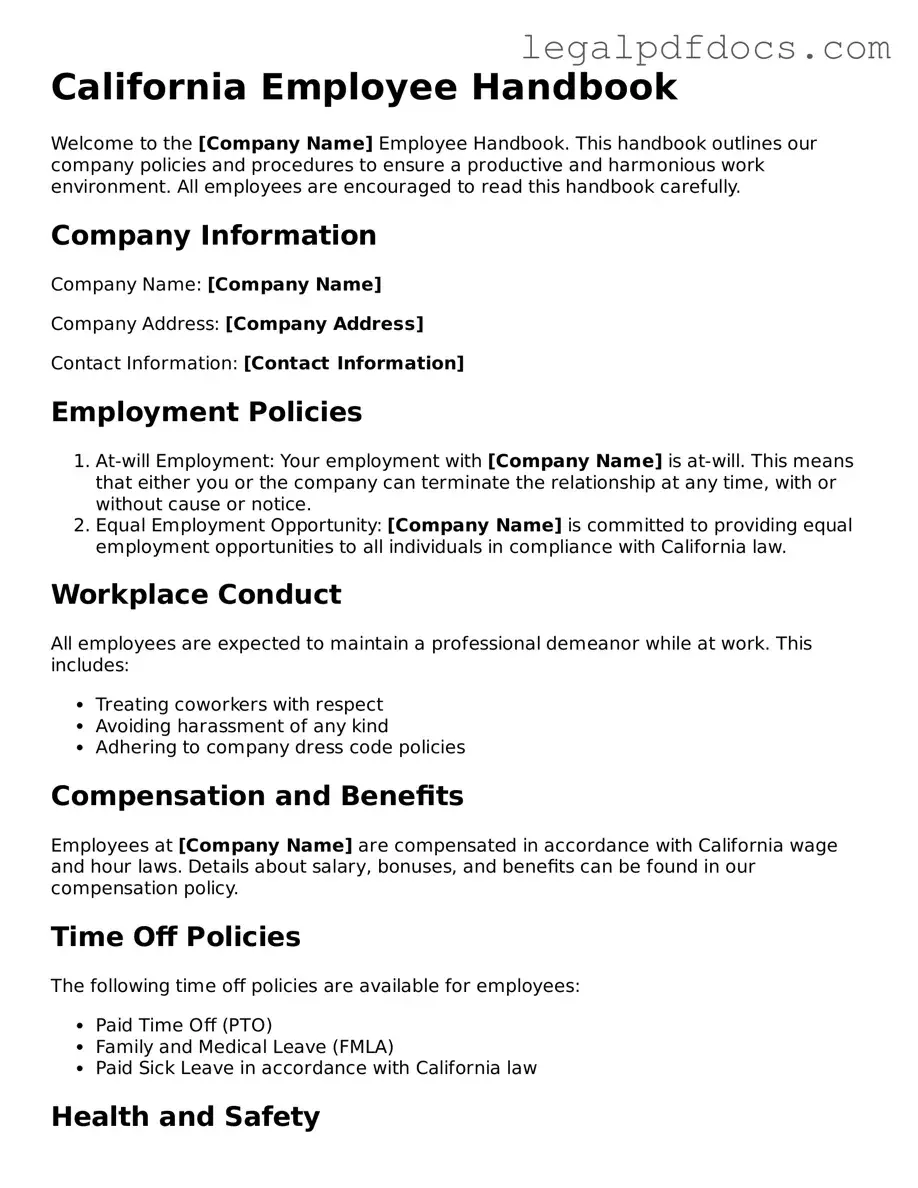Official Employee Handbook Form for California
The California Employee Handbook form serves as a vital document that outlines the rights and responsibilities of both employers and employees within the state. This form ensures compliance with state laws while fostering a clear understanding of workplace policies. To create a comprehensive handbook tailored to your organization, consider filling out the form by clicking the button below.
Open Employee Handbook Editor Here
